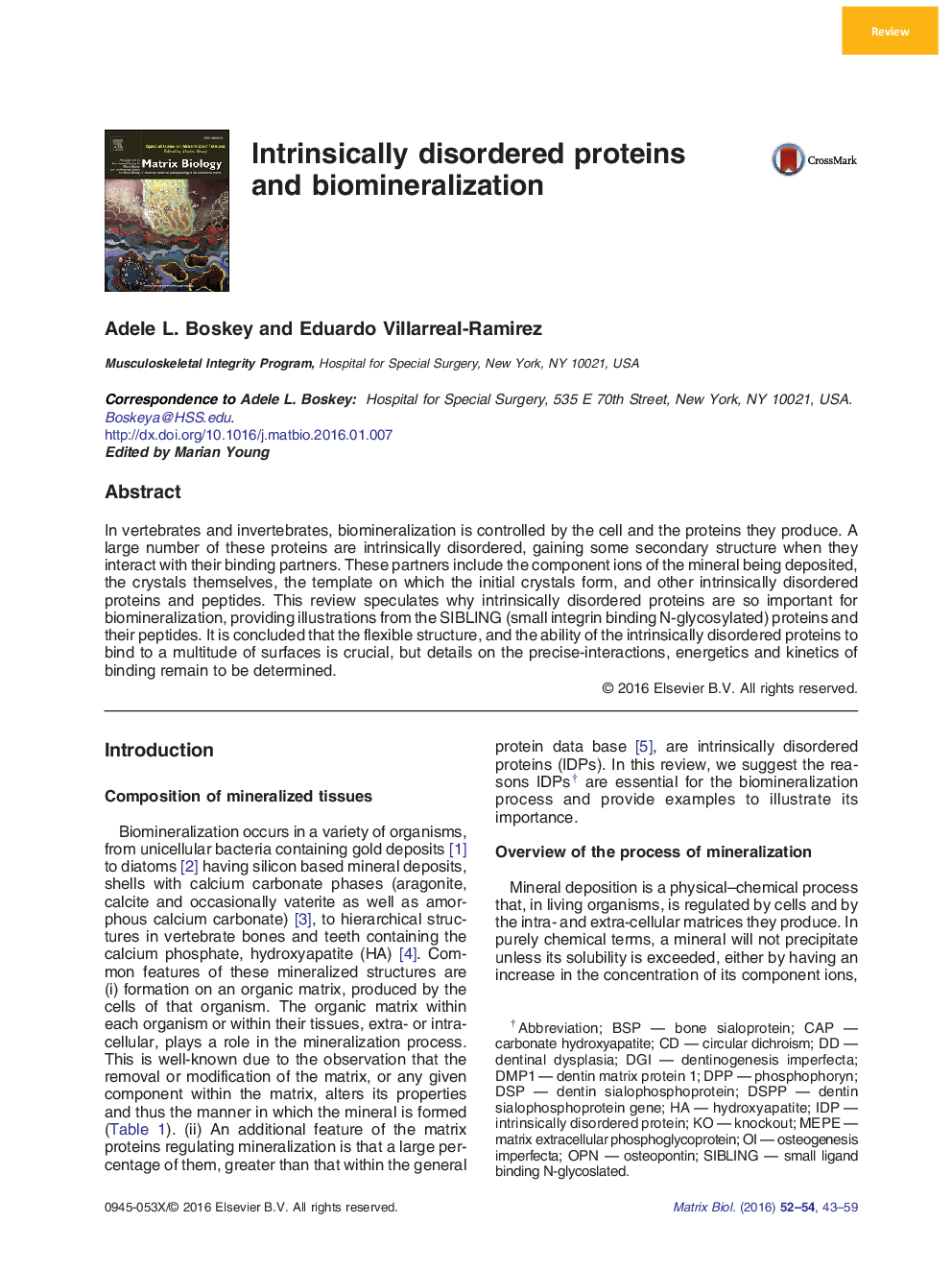| Article ID | Journal | Published Year | Pages | File Type |
|---|---|---|---|---|
| 2144670 | Matrix Biology | 2016 | 17 Pages |
•Noncollagenous proteins associated with biomineralization are intrinsically disordered (IDPs).•IDPs regulate mineralization via interactions with ion clusters, pre-nucleation clusters, amorphous and crystalline phases.•Examples are provided from shells, enamel, dentin, bones and pathologic calcifications.
In vertebrates and invertebrates, biomineralization is controlled by the cell and the proteins they produce. A large number of these proteins are intrinsically disordered, gaining some secondary structure when they interact with their binding partners. These partners include the component ions of the mineral being deposited, the crystals themselves, the template on which the initial crystals form, and other intrinsically disordered proteins and peptides. This review speculates why intrinsically disordered proteins are so important for biomineralization, providing illustrations from the SIBLING (small integrin binding N-glycosylated) proteins and their peptides. It is concluded that the flexible structure, and the ability of the intrinsically disordered proteins to bind to a multitude of surfaces is crucial, but details on the precise-interactions, energetics and kinetics of binding remain to be determined.
